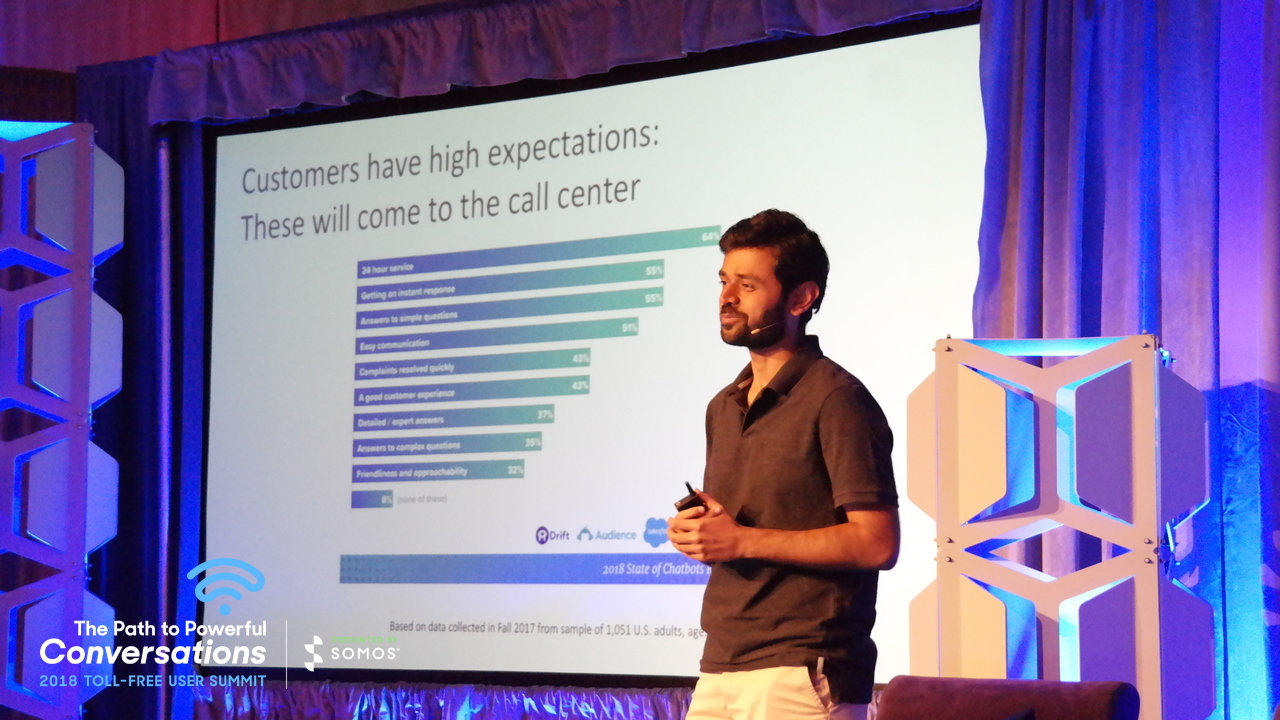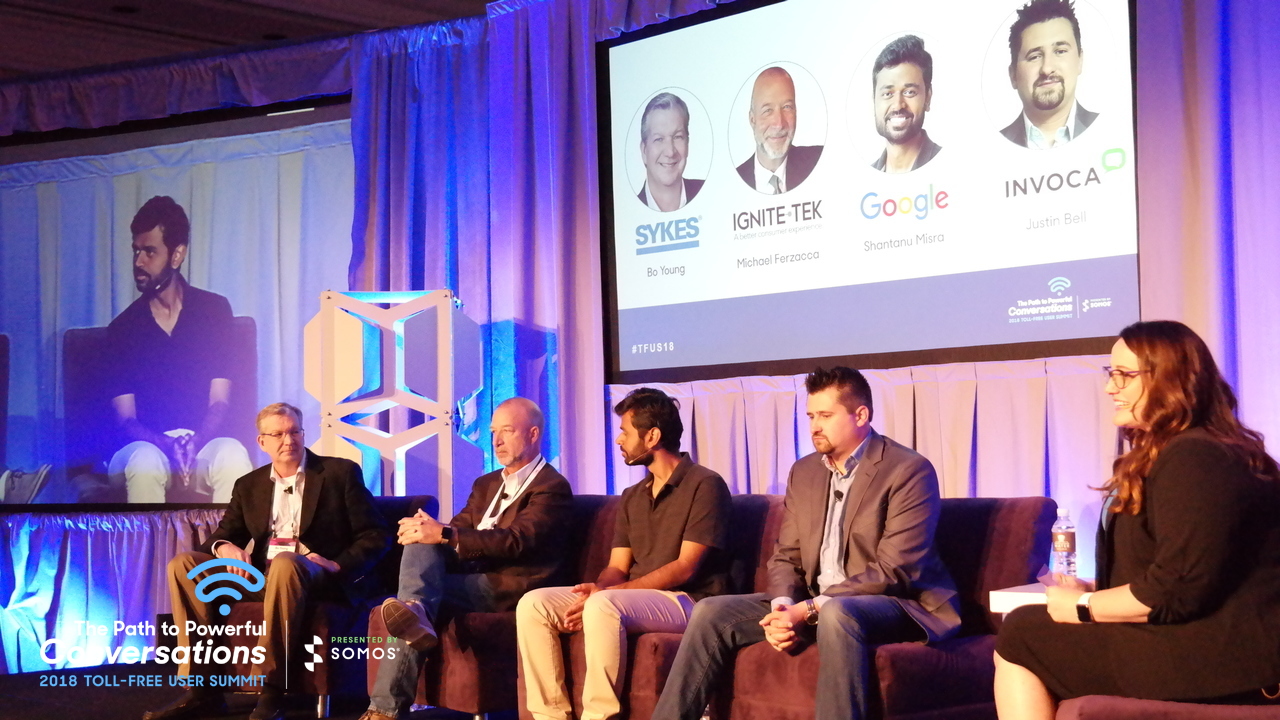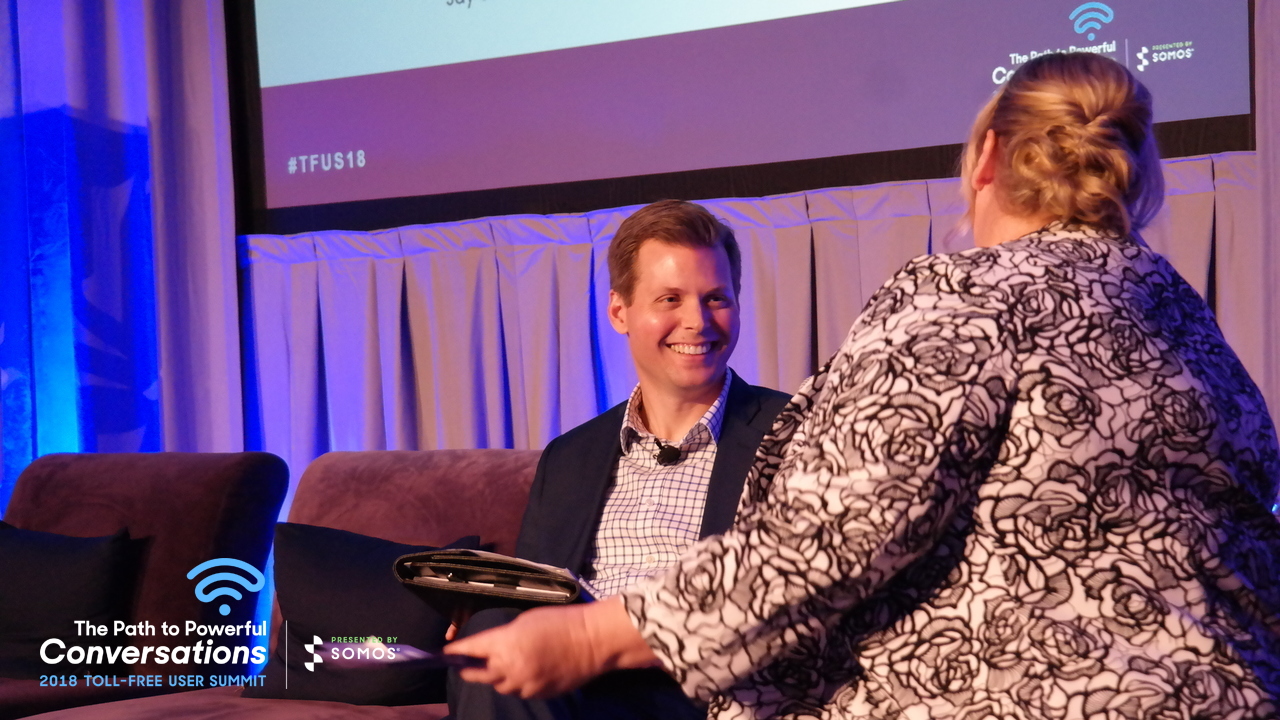-
Fraud Mitigation & Data Integrity
Essential tools for trust, integrity, fraud prevention & regulatory compliance.
- Driving Confidence in Telecom Through the Trust Framework
- RealNumber DNO – Prevent Fraud on Voice & Text
- RealAgent – Avoid Potential TCPA Violations
- RealBrand – Reinforce a Phone Number’s Identity & Reputation
- Global Number Range – Gain Authoritative Number Intelligence
- Live Status – Query Real-Time Mobile Number Intelligence
- Number Portability Query – Access Accurate Local & Global Number Portability Details
-
Routing Optimization
Gain access to authoritative routing data to create the ultimate routing intelligence for your traffic.
-
Number Administration
Empowering connectivity as the FCC appointed administrators for critical numbering registries.
-
Connected Device Intelligence
Gain total transparency to your IoT assets’ current state and vulnerabilities.
Insights
Everything You Missed from #TFUS18 Morning Sessions
It was quite the impressive morning here at the 2018 Toll-Free User Summit! From Google’s use of AI Technology to the next generation contact center to modernizing Toll-Free with the FCC, our morning sessions definitely provided attendees with an amazing range of thought leadership. Read morning about everything you might have missed with our recaps of the morning sessions:
Signs of the Future with Google’s Contact Center AI
Artificial intelligence (AI) is not only revolutionizing how we interact with customers but also creating a more personalized, human connection with customers who are calling into contact centers.
Knowing this, how can we inject AI into the contact center?
This question was central to Shantanu Misra, Product Manager at Google, and his presentation on “Signs of the Future with Google’s Contact Center AI.” One thing we must do, according to Shantanu, before we start to think about injecting AI into the contact center is how our customers are interacting with the contact center and what they expect when they call into the contact center. When it comes down to it, the customer wants instant answers, 24x7x365 service and most importantly, their expectations surpassed.
This is where a technology like Google’s Dialogflow can step in and optimize the contact center experience for consumers. Dialogflow is a Google-owned developer of human–computer interaction technologies based on natural language conversations that utilizes AI to provide great customer service. Specifically, it provides an unmatched understanding of language and speech and can:
- Give customers access to answers to common questions 24/7 globally;
- Help live agents answer questions more quickly and accurately with fewer holds; and
- Make complex, frustrating IVR trees obsolete without having to rely more on live agents.
When thinking about injecting AI into the contact center, one thing we should strongly consider is: How do we make our contact center smarter? One way we can achieve this, according to Shantanu, is by knowing and understanding what calls are coming in, what’s being discussed and what can be automated (versus handled by human agents). At the end of the day, our end goal should be to build natural and rich conversations that help customers down the path to powerful conversations.

The Next Generation Contact Center
The contact center is no longer just a voice on the other end of the phone; it’s evolved into a reservoir of untapped consumer knowledge and the personification of the brand experience for most consumers. Somos President & CEO Gina Perini lead a panel on the next generation contact center with Google’s Shantanu Misra, Invoca’s Justin Bell, Ignite-TEK’s Michael Ferzacca, and SYKES’ Bo Young.
The panel kicked-off by addressing the current role of the contact center as it relates to brand experience and common challenges contact centers face when customers call in. Bo Young from SKYES noted that for most companies, the agent is an extension of the brand. In an effort to fully analyze brand experience, companies need to measure the entire contact, not just the isolated call. This means understanding the entire context of a customer contact, including a customer’s history and their actions once they hang up.
Mike Ferzacca from Ignite-Tek noted that gathering this information is a challenge as contact centers often maintain tight budgets. Google’s Shantanu Misra also brought up the challenge of balancing the cost of contact centers with providing fantastic customer experiences—something he believes will become the status quo, rather than a differentiator in the future.
One thing the panelists all seemed to agree was that contact centers will persevere and become more intelligent and functional. They discussed their ideas on what the future contact center will look like:
- Justin Bell with Invoca foresees greater implementation of artificial intelligence, leading to greater agent retention at contact centers. As a result, Bell believes customers could potentially have designated contact reps in the future, which will build consumer trust.
- Bo Young echoed this sentiment, noting that if AI can relieve agents of mundane tasks, agents and subsequently customers will be happier. Young also believes contact centers will become better at streamlining roles and channels, shifting from service to sales, and leading consumers to the best channel for them with ease.
- Michael Ferzacca of Ignite-TEK sees the contact center playing a more pivotal role in marketing in the future. Rather than acting reactively, Ferzacca believes companies in the future can better leverage data from contact centers to use as a marketing driver.
- Shantanu Misra of Google believes the contact centers of the future will be both more human and more contextual. Like the other panelists, Misra thinks AI and better contextual consumer data will help agents be more successful in their roles and therefore help provide a more personalized service. Piggybacking on Young’s thoughts, Misra also sees contact centers becoming more naturally multi-modal, in that consumers will be able to interact with the channel that best suits them, whether via text, video, voice or through IoT devices.
Overall, the panelists could all agree that rather than fading away, contact centers will only continue to evolve as an essential tool to connect with customers in a meaningful way.

A Signature Conversation: A View from the FCC Chairman’s Office
“Don’t Stop Believing.”
For Dr. Jay Schwarz of the FCC, this saying is more than just a song lyric, it’s an inspiring message and a call for exciting, vibrant ideas, specifically around Toll-Free. In his session at the 2018 Toll-Free User Summit, “A Signature Conversation: A View from the FCC Chairman’s Office,” the Advisor to Chairman Pai of the FCC sat down with Ann Berkowitz, Somos’ Chief Administrative Officer, to discuss some of the recent happenings at the FCC, as well as upcoming initiatives. One of the major objectives for the FCC is evolving the vision of Toll-Free. The recent declaratory ruling released in June 2018 to provide safeguards and controls for text-enabled Toll-Free Numbers was chief among the topics discussed. As noted by Jay, it’s important to have “clear property rights” in place, as clearer rules provider a better, more streamlined opportunity to regulate fairly.
Another hot topic of conversation was robo-calling. As the number one chief complaint from consumers to the FCC, it’s definitely an issue that is of the utmost importance to Chairman Pai. Jay recognized that it is a serious consumer issue that negatively affects the Toll-Free ecosystem and an issue that the FCC has been taking serious steps to minimize, if not completely alleviate.
The last topic Jay and Ann discussed was the introduction of an auction and secondary market to the Toll-Free industry. As an economist by trade himself, Jay sees the introduction of an auction model to Toll-Free as a good economic decision. The FCC hopes that adding an auction and secondary market into Toll-Free Number allocation will improve the current system and embrace the entrepreneurial spirit of the industry. The initial auction offering will be a simple model that has room for expansion upon a successful execution.
Overall, the FCC is taking positive steps to protect the integrity of Toll-Free Numbers and to embrace the innovation and growth happening in the market.

Stay Connected
Stay in touch! Sign up for our monthly newsletter.
Need to reach us sooner? Call, text, or email us at:
844.HEY.SOMOS help@somos.com